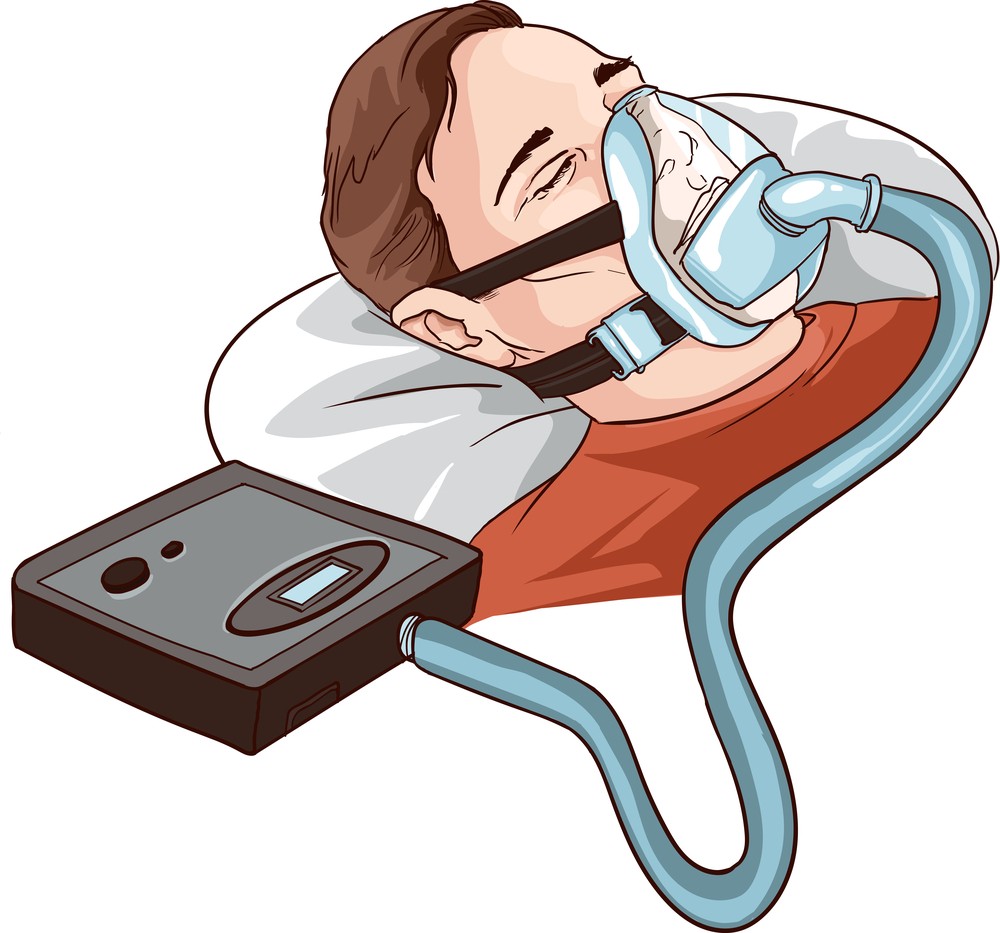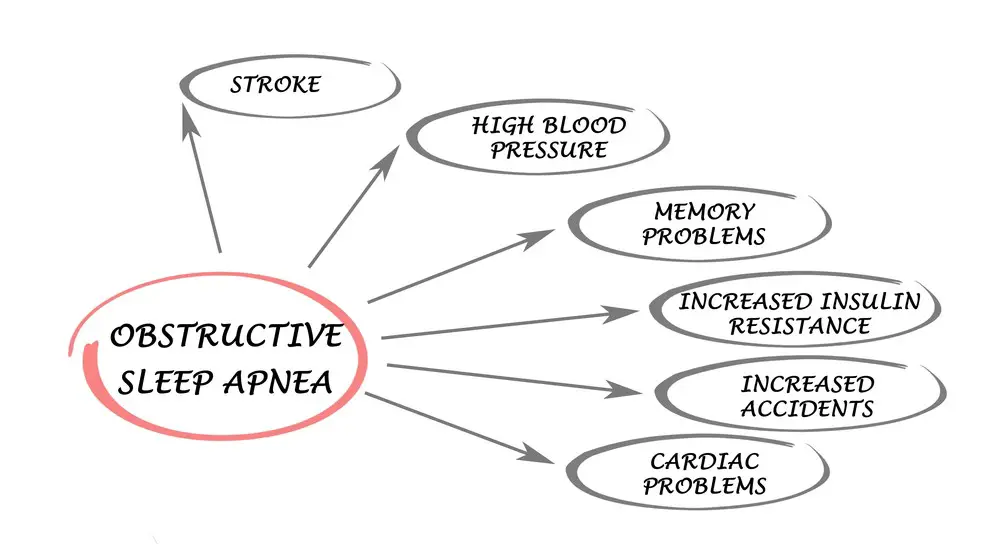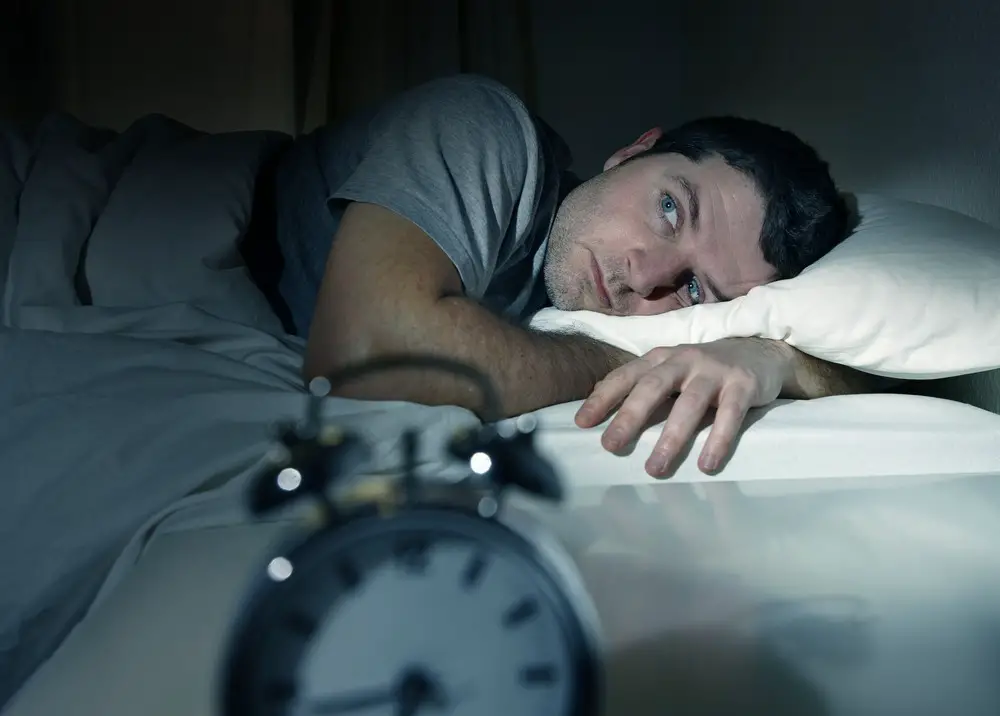As a BetterHelp affiliate, we receive compensation from BetterHelp if you purchase products or services through the links provided
Sleep apnea is a serious sleep disorder affecting millions of people’s quality of life worldwide. It is characterized by repetitive pauses in breathing during sleep, often lasting from a few seconds to minutes, and usually followed by a partial awakening. With sleep apnea being a prevalent issue, many may wonder if it could eventually lead to life-threatening consequences.
Understanding the risks and complications of sleep apnea is crucial for identifying potential dangers. Recognizing the symptoms, causes, and risk factors is essential to seek proper medical attention promptly. Knowledge of treatment options and managing the condition can help mitigate the risk of more severe health issues like cardiovascular diseases and stroke.
Key Takeaways
- Sleep apnea is a common sleep disorder involving repeated interruptions in breathing during sleep.
- Recognizing symptoms, causes, and risk factors helps promptly seek medical attention.
- Proper treatment and management of sleep apnea can prevent severe health complications.

Understanding Sleep Apnea
Sleep apnea is a sleep disorder characterized by interrupted breathing during sleep. There are three main types of sleep apnea: Obstructive Sleep Apnea, Central Sleep Apnea, and Complex Sleep Apnea.
Obstructive Sleep Apnea
Obstructive Sleep Apnea (OSA) is the most common form of sleep apnea. It occurs when the muscles in the back of the throat fail to keep the airway open, despite the effort to breathe. This leads to a partial or complete airway blockage, causing a pause in breathing. Some common symptoms of OSA include loud snoring, gasping for air during sleep, and frequent awakenings. Risk factors for OSA include obesity, being male, having a family history of sleep apnea, and smoking.
Central Sleep Apnea
Central Sleep Apnea (CSA) is less common than OSA, and it occurs when the brain fails to transmit proper signals to the muscles that control breathing. As a result, the person stops breathing momentarily during sleep. CSA is often linked to other medical conditions like heart failure or stroke. Some common signs of CSA include periods of stopped breathing, gasping for air during sleep, and difficulty staying asleep. Treatment for CSA might involve addressing the underlying medical condition and using devices to help regulate breathing during sleep.
Complex Sleep Apnea
Complex Sleep Apnea Syndrome is a combination of both obstructive and central sleep apnea. It is also known as treatment-emergent central sleep apnea, as it is usually diagnosed when someone with OSA begins using a continuous positive airway pressure (CPAP) device for treatment but still experiences breathing disruptions during sleep. This type of sleep apnea is relatively rare and may require a more specialized treatment approach involving a combination of therapies to manage both the obstructive and central components.
 Symptoms and Signs
Symptoms and Signs
Sleep apnea is characterized by various symptoms and signs that an individual can experience. One of the most common indicators is snoring. However, it’s important to note that not all snoring indicates sleep apnea and not everyone with sleep apnea snores.
Loud snoring accompanied by moments of silence followed by a gasp or choking sound is a strong indication of sleep apnea. These gaps occur because of interrupted breathing patterns during sleep, typically caused by airflow blockage.
In addition to snoring, other symptoms of sleep apnea include:
- Daytime sleepiness: Individuals with sleep apnea often experience excessive sleepiness during the day, even if they have had a full night’s sleep.
- Fatigue: Persistent fatigue, even after a seemingly good night’s sleep, is another common symptom.
- Dry mouth: Sleep apnea can cause individuals to sleep with their mouths open, leading to a dry mouth upon waking.
- Morning headache: A dull morning headache can indicate sleep apnea, often caused by reduced oxygen levels due to interrupted breathing during sleep.
- Irritability: People with sleep apnea might exhibit irritability or mood swings, potentially due to a lack of restful sleep.
To better understand the severity of sleep apnea, medical professionals often use the apnea-hypopnea index (AHI), which measures the number of breathing interruptions per hour of sleep. A higher AHI indicates a severe case of sleep apnea.
Identifying and addressing these symptoms and signs is important, as untreated sleep apnea can lead to further complications and health risks. If an individual suspect having sleep apnea, it is crucial to consult a healthcare professional for a proper assessment and treatment plan.
Causes and Risk Factors
Sleep apnea, particularly obstructive sleep apnea (OSA), occurs when the airway becomes blocked during sleep, causing the oxygen level in the blood to drop. This condition affects adults and children, but certain factors increase the risk of developing it.
One main cause of OSA is obesity, as the excess fat tissues around the neck can obstruct the airway. Men are generally more prone to sleep apnea than women, and the risk increases with age, especially in those over 65. Lifestyle choices such as consuming alcohol and using sedatives can also contribute to airway obstruction, as they relax the muscles in the throat.
Anatomical factors can also play a role in sleep apnea. Deviations in the structure of the nose, an enlarged tongue, or large tonsils can all lead to partial or complete airway blockage. Additionally, a narrow airway or a soft palate obstructing the air passage can result in sleep apnea.
A family history of sleep apnea increases the risk, as do certain medical conditions like type 2 diabetes, hypertension, and heart problems, including atrial fibrillation. High blood pressure can worsen sleep apnea, and in turn, sleep apnea can worsen high blood pressure.
Sleep apnea can lead to several complications, some of which can be life-threatening. Daytime fatigue is a common symptom due to repeated awakenings at night. This can adversely impact an individual’s mood, memory, and stress levels. Sudden cardiac death, atrial fibrillation, and stroke are possible consequences of untreated sleep apnea. Children with sleep apnea may exhibit behavioral issues, have poor performance in school, and develop conditions like ADHD.
In summary, sleep apnea is influenced by various factors, including age, gender, obesity, anatomical variations, and certain medical conditions. Identifying and addressing these risk factors can help prevent and manage sleep apnea.

Diagnosis and Evaluation
Diagnosing Sleep Apnea
A doctor will conduct a thorough physical examination and review the patient’s medical history to diagnose sleep apnea. The patient may be asked about their sleep habits, snoring, and any observed pauses in breathing during sleep. A bed partner’s observations can also provide information about the patient’s sleep patterns.
After the initial assessment, the doctor may refer the patient to a sleep specialist for further evaluation. A sleep study, also known as a polysomnogram, is typically conducted to confirm the presence of sleep apnea. This test monitors an individual’s sleep patterns, brain activity, eye movements, heart rate, and blood oxygen levels throughout the night.
Determining Severity
To determine the severity of sleep apnea, health professionals use the Apnea-Hypopnea Index (AHI), which measures the number of complete (apnea) or partial (hypopnea) breathing pauses per hour of sleep. The AHI categories are as follows:
- Normal: AHI below 5
- Mild sleep apnea: AHI of 5-14
- Moderate sleep apnea: AHI of 15-29
- Severe sleep apnea: AHI of 30 or greater
Aside from the AHI, the severity of sleep apnea can also be influenced by factors such as the degree of oxygen desaturation, sleep fragmentation, and additional health conditions.
Based on the diagnosis and severity assessment, the sleep specialist and the patient will discuss appropriate treatment options. In some cases, an oral appliance may be recommended to help maintain an open airway during sleep. Treatment decisions will ultimately be tailored to the individual’s needs and circumstances.
Treatment and Management
Lifestyle Modifications
One of the first steps in managing sleep apnea is making lifestyle modifications. Losing weight, for example, can significantly improve symptoms and reduce breathing disruptions during sleep. Being overweight can cause excess tissue in the throat, restricting the airway and resulting in sleep apnea. Additionally, quitting smoking is vital, as it can reduce inflammation and improve respiratory function.
Maintaining a healthy sleep schedule and consistent sleep and wake times are also essential. This helps regulate the body’s natural sleep patterns, allowing for a more restful sleep. Furthermore, side or positional sleep therapy can benefit sleep apnea sufferers, preventing the tongue from falling back into the throat and blocking the airway.
Continuous Positive Airway Pressure (CPAP)
Continuous Positive Airway Pressure (CPAP) is the most common and effective sleep apnea treatment. The CPAP device provides a constant airflow through a mask, keeping the airways open and preventing breathing disruptions. With consistent use, CPAP can significantly improve sleep, increase daytime alertness, and decrease complications related to low oxygen levels.
However, some individuals may find the CPAP uncomfortable and difficult to use consistently. Alternative therapies like Bilevel Positive Airway Pressure (BiPAP) or Adaptive Servo-Ventilation (ASV) can be explored in these cases.
Surgery
Surgery is a consideration for those individuals who have not found success with lifestyle modifications or other treatments. The type of surgery varies depending on the severity and cause of sleep apnea. Common surgical procedures include:
- Uvulopalatopharyngoplasty (UPPP): Removes excess soft tissue in the throat for improved airflow.
- Genioglossus advancement (GA): Moves the base of the tongue forward to increase airway space.
- Maxillomandibular advancement (MMA): Repositions the upper and lower jaw, opening the airway.
- Hypoglossal nerve stimulator: Implants a device that stimulates the tongue’s muscle, keeping the airway open during sleep.
The physician will thoroughly evaluate the patient’s symptoms, anatomy, and overall health when determining the appropriate surgical intervention.
Other Treatments
Several other treatments may be suitable for specific sleep apnea cases. For instance, positional therapy involves wearing a device that helps keep the individual sleeping on their side, which can benefit those with positional obstructive sleep apnea.
Oral appliances or mandibular advancement devices, which reposition the lower jaw and tongue, can be helpful in mild to moderate obstructive sleep apnea cases. Lastly, supportive therapies, such as behavioral therapy or counseling for depression, may be useful in addressing the emotional aspects of living with sleep apnea.
Potential Complications
If left untreated, sleep apnea can potentially lead to a range of serious health complications. One of the most concerning risks associated with sleep apnea is an increased risk of stroke, as the disorder can cause blood oxygen levels to drop, straining the brain. The condition also raises the likelihood of developing high blood pressure or hypertension, which can further strain the circulatory system.
Another significant risk is an increased likelihood of developing type 2 diabetes. Sleep apnea sufferers often experience insulin resistance, contributing to the onset of diabetes. Additionally, untreated sleep apnea has been linked to heart-related problems, including heart attack, heart failure, and sudden cardiac death. Atrial fibrillation can also occur due to this condition, further compromising heart health.
Sleep apnea doesn’t solely affect physical health; it has an impact on mental health as well. Individuals with the disorder may struggle with mood changes, depression, and memory issues due to the lack of restorative sleep. Chronic headaches are another common complaint among those suffering from this medical condition.
Recognizing that untreated sleep apnea significantly increases the risk of accidents is essential. The persistent sleepiness caused by sleep apnea makes individuals more prone to causing car accidents and work-related accidents due to impaired cognitive function and decreased vigilance.
In summary, sleep apnea can contribute to various potential complications, including stroke, hypertension, diabetes, heart disease, mental health issues, and an increased risk of accidents. It is crucial to seek medical attention and treatment for this condition to minimize these risks and improve the overall quality of life.
Frequently Asked Questions
Is death common?
Sleep apnea can increase the risk of death, but it is not common for it to be the direct cause of death. Severe cases can lead to fatal complications like stroke, heart failure, or sudden cardiac arrest.
Untreated symptoms?
Untreated sleep apnea can lead to long-term health problems. Some potential complications include high blood pressure, heart disease, memory problems, type 2 diabetes, mood disorders, and worsening of ADHD.
Life expectancy?
An individual’s life expectancy with sleep apnea can vary based on factors like the severity of the condition, lifestyle choices, and adherence to treatment plans. Proper treatment and management can improve life expectancy and quality of life.
What are some evere symptoms?
Severe sleep apnea symptoms might include excessive daytime sleepiness, loud snoring, gasping for air during sleep, insomnia, irritability, concentration difficulties, and morning headaches.
What are the treatment options?
There are various treatment options available for sleep apnea, including lifestyle changes, continuous positive airway pressure (CPAP) therapy, oral appliances, positional therapy, and in some cases, surgery.
What are the causes of apnea?
Multiple factors, including obesity, family history, use of alcohol or sedatives, smoking, and medical conditions like hypothyroidism or acromegaly, can cause sleep apnea. Additionally, obstructive sleep apnea can be caused by structural abnormalities like enlarged tonsils or a narrow airway.
- 7 Ideas to Help You Relax and Unwind on a Family Vacation - April 27, 2025
- How Having Cybersecurity Protection Helps You Relax - April 25, 2025
- 8 Reasons Why Spending Time Outside Calms You Down - April 25, 2025
This site contains affiliate links to products. We will receive a commission for purchases made through these links.


 Symptoms and Signs
Symptoms and Signs
